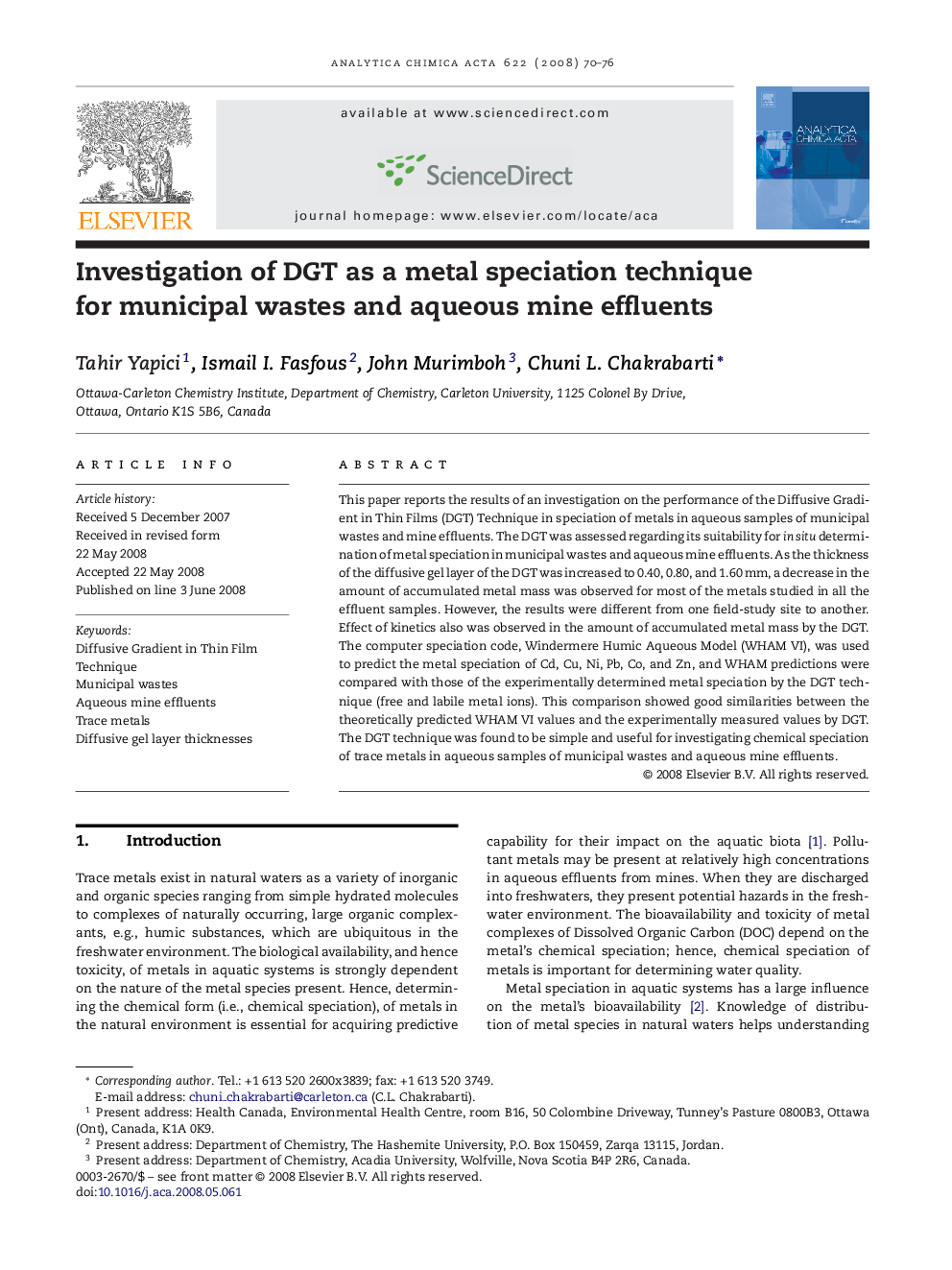| Article ID | Journal | Published Year | Pages | File Type |
|---|---|---|---|---|
| 1169322 | Analytica Chimica Acta | 2008 | 7 Pages |
This paper reports the results of an investigation on the performance of the Diffusive Gradient in Thin Films (DGT) Technique in speciation of metals in aqueous samples of municipal wastes and mine effluents. The DGT was assessed regarding its suitability for in situ determination of metal speciation in municipal wastes and aqueous mine effluents. As the thickness of the diffusive gel layer of the DGT was increased to 0.40, 0.80, and 1.60 mm, a decrease in the amount of accumulated metal mass was observed for most of the metals studied in all the effluent samples. However, the results were different from one field-study site to another. Effect of kinetics also was observed in the amount of accumulated metal mass by the DGT. The computer speciation code, Windermere Humic Aqueous Model (WHAM VI), was used to predict the metal speciation of Cd, Cu, Ni, Pb, Co, and Zn, and WHAM predictions were compared with those of the experimentally determined metal speciation by the DGT technique (free and labile metal ions). This comparison showed good similarities between the theoretically predicted WHAM VI values and the experimentally measured values by DGT. The DGT technique was found to be simple and useful for investigating chemical speciation of trace metals in aqueous samples of municipal wastes and aqueous mine effluents.
